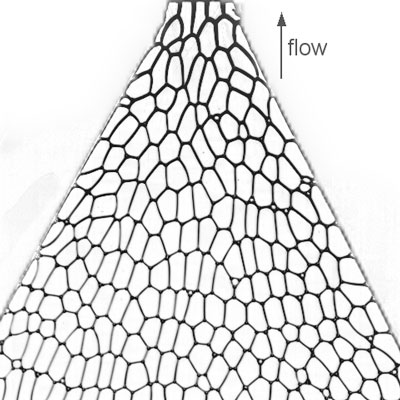| Posted: Nov 30, 2015 |
Liquid foam: Plastic, elastic and fluid
(Nanowerk News) What differentiates complex fluids from mere fluids? What makes them unique is that they are neither solid nor liquid. Among such complex fluids are foams. They are used as a model to understand the mechanisms underlying complex fluids flow. Now, a team of French physicists has gained new insights into predicting how complex fluids react under stretching conditions due to the interplay between elasticity, plasticity and flow. These findings were recently published in EPJ E ("Flow of foam through a convergent channel") by Benjamin Dollet and Claire Bocher from the Rennes Institute of Physics, in Brittany, France.
|
 |
| The team studied experimentally the flow of a foam confined as a bubble monolayer between two plates through a convergent channel.
|
|
Ultimately, potential applications include the design of new, optimised acoustic insulators based on liquid forms, or the mitigation of blast waves caused by explosions.
|
|
In this study, the authors study foam flow in a wedge-shaped channel, where the bubbles are in a monolayer and therefore easy to visualise. The choice of a wedge structure as a type of confined space is a novel one not previously examined.
|
|
Its advantage is that it is simple enough to automatically measure important features such as elongated flow and elastic deformation, as well as plastic events like swapping of neighbouring bubbles. The study was performed in the two main modes of deformation of any material, namely through sideways, or shear deformation, and through elongation. This, in turn, made it possible to compare such flows to some simple models.
|
|
As the main new results, Dollet and his colleague quantified for the first time the connection between plastic events and the foam deformation rate. They also experimentally identified a coupling between elastic stresses and the foam deformation rate.
|
|
Better understanding foam characteristics could. ultimately, help us to further investigate how liquid foams absorb mechanical energy, i.e., through experiments on acoustical propagation and shock wave propagation in liquid foams.
|

